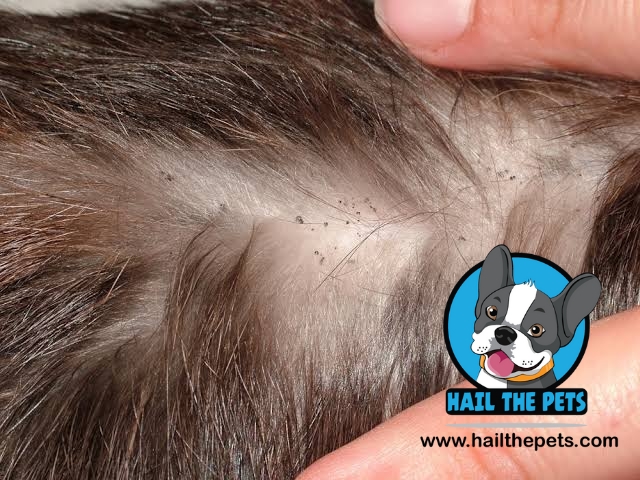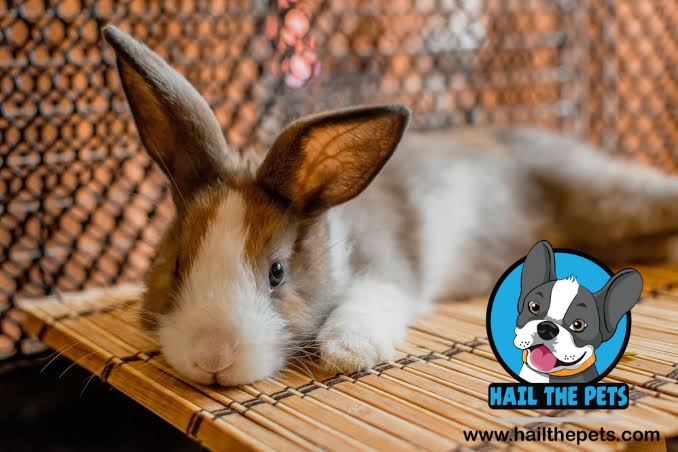Rabbits bring joy to our lives with their twitching noses and playful behavior. As rabbit lovers we deeply appreciate their personalities and the strong connections we form with them. However, like any other pet, they are susceptible to various diseases that can threaten their health and well-being. In this blog post, we will delve into the realities of rabbit health. Explore ten diseases that can impact these furry companions. Our aim is to offer insights and practical advice from veterinary experts so that you can genuinely prioritise your rabbit’s health.
Learn more: Persian Cats: Homecare and Maintenance Tips for Brushing and Grooming your Furry Friend at Home-October 2023
Risks for The Rabbit
To demonstrate the severity of the issue, this section will look at each of the 10 deadly rabbit diseases that may impact your lovely pets. These disorders include a wide spectrum of medical conditions, from parasitic invaders that interfere with their digestive systems to viral infections that damage their immune systems. It’s crucial to remember that information is your best line of defense against these attacks.
With the information you learn from this article, you’ll be better prepared to recognize the signs, take preventative measures, and work with veterinary professionals to provide your rabbits the best care possible.
Despite their robust exterior, rabbits are susceptible to a number of diseases that can be harmful. These diseases may impact their general health, which can be anything from viral infections to parasitic infestations. You can better position yourself to protect your rabbit if you are aware of these potential threats.

Diseases
1. Hairballs
Rabbits are known for their constant grooming, which often leads to the ingestion of hair. Normally, the hair passes through the digestive tract and out through the animal’s droppings. However, hair chewing can be a problem if too much is consumed or if it builds up in the stomach and causes a blockage, commonly known as a hairball. Here are some tips from a veterinary perspective on how to prevent and treat hairballs in rabbits:
Prevention
- Provide a high-fiber diet to prevent hair chewing caused by a low-fiber diet. Feeding hay along with pellets can help.
- Enrich the environment with toys and items on which to gnaw to prevent hair chewing caused by boredom.
- Combing the rabbit daily to remove loose hair can also help prevent hairballs.
Treatment
- The goal of treatment for a blockage are to get rid of the obstruction, balance the digestive tract once again, get the digestive system functioning normally, and alleviate dehydration and appetite loss.
- Fluids and painkillers can be administered to aid with therapy. Probiotic supplements may be advised to restore the natural balance of bacteria in the animal’s digestive tract.
- The digestive enzymes bromelain and papain, which are both present in fresh pineapple juice, may aid in dissolving the mucus tying the hairball together.
- Roughage (hay or straw) should be fed during the treatment to help carry the hair fibers through the digestive tract and out with the feces.
- Mineral oil, cat hairball treatments, and laxatives do not effectively remove hairballs from rabbits.
- Surgical treatment is effective but may be risky.
Since hairballs are rarely evident on x-ray scans, it might be challenging to identify a blockage before the rabbit passes away. Therefore, the best course of action is prevention. Hairballs in rabbits can be avoided by feeding them a high-fiber diet, preventing stress and obesity, providing them with stimulating toys and objects to chew, combing them every day to remove stray hair, and enriching their habitat.

Learn more: Hair Balls in Rabbits
2. Myxomatosis
Insects, including fleas, lice, ticks, and mites, can infect rabbits with the virus known as myxomatosis. You must take every precaution to lessen the likelihood that your rabbit may contract myxomatosis because it is extremely harmful and has a high mortality rate. Fortunately, this ailment is well-known, and there are several things you can take to safeguard your dogs.
Among the signs of the illness, swelling around the eyes and ears is typical and obvious, giving infected rabbits a distinctive look. Myxomatosis-infected rabbits may also have runny noses and milky eye discharge, which highlights the disease’s effects on their respiratory and ocular systems. The afflicted animals may experience pain and agitation as a result of mange patches and vaginal swelling. As they try to carry out their regular habits, rabbits with declining health show indications of lethargy and loss of appetite. These symptoms are frequently accompanied by an increase in body temperature, which manifests as a fever, emphasising the systemic impact of myxomatosis on the rabbit’s general health.

Prevention
- Vaccination is the only way to protect rabbits from myxomatosis. Vaccination can be given from five weeks of age, and annual boosters are required to maintain immunity
- Put mosquito netting around your rabbit’s hutch even if indoors (this will help to prevent flystrike as well)
- If your rabbits are allowed to exercise outside, avoid letting them out in the early morning or late afternoon when mosquitoes are more numerous
Treatment
- There is a slim chance that your rabbit will recover if they receive attentive care and extensive treatment, including medications to prevent subsequent infections.
- The condition frequently results in death, with the rabbit dying in 10–14 days.
- Unfortunately, recovery is uncommon and there is no specific treatment. When infected, putting the rabbit to sleep is typically the nicest course of action.
Learn more: Everything you need to know about myxomatosis
3. Rabbit viral hemorrhagic disease
It is a highly infectious disease that affects European rabbits (Oryctolagus cuniculus). Cottontail rabbits and jackrabbits are not susceptible, and humans and other mammals are also not affected.
Direct contact with sick rabbits or indirect interaction with inanimate things can both spread the virus, which is very infectious. Fever from infection leads to liver damage, gut inflammation, and lymph node damage, which are all followed by abnormal blood clotting and bleeding throughout many organs. Rabbits with fevers exhibit little symptoms and pass away within 24 hours. Affected groups frequently have infection rates close to 100% and mortality rates between 60% and 90%.
Read more: Common diseases in Persian cats: Signs, symptoms and preventive treatments- October 2023
After being discovered in China in 1984, the rabbit calicivirus illness has now spread to populations of both domestic and wild rabbits in continental Europe. There have been rabbit calicivirus outbreaks in Australia (1995), New Zealand (1997, and Cuba (1997, respectively). A group of 27 rabbits in Iowa were found to have the rabbit calicivirus illness in 2000. It was not possible to identify the infection’s origin. The virus was eradicated, the outbreak was stopped, and the United States is still free of this illness.
Rabbit calicivirus disease is a reportable disease, which means that any veterinarian who identifies it must notify the appropriate government authorities.

Prevention
To prevent rabbit calicivirus disease, the following measures can be taken:
- Vaccinate all domestic rabbits yearly from 3 months of age with a single dose of inactivated virus vaccine.
- Give the vaccine separately from the myxomatosis vaccination.
- Wash hands before handling rabbits.
- Keep rabbits’ living areas clean and regularly disinfect them.
There is, unfortunately, no cure for this disease.
Read More: Rabbit Hemorrhagic Disease
4. Enterotoxemia
When naturally occurring, enterotoxemia is a severe diarrheal disease that typically affects rabbits between the ages of 4 and 8 weeks. However, it can also afflict rabbits at any stage of life if an incorrect antibiotic is given to them orally. The bacterium Clostridium spiroforme, which creates an iota toxin, is the cause of the illness. Lethargy, a rough coat, greenish-brown feces surrounding the perineum, and quick mortality within 48 hours are all signs of the illness. A rabbit appears healthy in the evening but dies the next morning. A necropsy reveals intestines that have been fluid-distended and have hemorrhagic petechiae on the surface.

Prevention
- Reduce stress in young rabbits to mitigate the risk of enterotoxemia.
- Provide ad lib feeding of hay or straw.
- Add 250 ppm of copper sulfate to the diet of young rabbits.
Treatment and Care
- Colony rabbit treatment is challenging due to the rapid progression of the disease.
- Cholestyramine can be used when feasible, showing promising results in preventing and treating the disease.
- Individual rabbit treatment involves aggressive fluid therapy and intensive supportive care.
- Vigilant monitoring of hydration, body temperature, and heart rates is crucial.
Read More about it: Enterotoxemia
5. Rabbit Fleas
Flea infestations pose a difficult challenge in the realm of rabbit care that requires our attention. If left unchecked, fleas, those small but tenacious pests, can seriously harm your rabbit’s health. The key to preserving your rabbit’s comfort and health is to be aware of the symptoms and take preventative action.
Read more: Reptiles Wonder: Navigating the Diverse Realms of Earth’s Reptiles- November 2023
Infestations of fleas are more than just a nuisance. They may trigger a series of health problems, from minor discomfort to life-threatening consequences. Small black flecks called “flea dirt” that emerge in your rabbit’s fur are one of the most obvious indications of a flea infestation.
These flecks are actually flea faeces, which contains blood that has been digested. Even though itching is a normal response to flea bites, continued itching can harm the skin and raise the risk of subsequent illnesses. Additionally, anemia from blood loss from flea feeding can make your rabbit weak and defenseless.

Prevention
- Regularly inspect your rabbit’s fur for flea dirt and any signs of infestation.
- Opt for flea medication specifically formulated for rabbits to avoid adverse reactions.
- Create a clean and sanitary living environment for your rabbit.
- Maintain meticulous hygiene practices, including regular grooming and cleaning of the living space.
- Minimize contact between your rabbit and other animals that could potentially carry fleas.
- Consult with a veterinarian to devise a comprehensive flea prevention plan tailored to your rabbit’s needs.
Learn more: Spilopsyllus cuniculi
6. Flystrike
When flies deposit their eggs on your rabbit and those eggs later hatch into maggots, the result is a terrible illness known as “flystrike,” sometimes known as “myiasis.” The maggots from blowflies like bluebottles and green bottles are particularly dangerous since they can quickly pierce your rabbit’s flesh in just 24 hours, potentially killing it.
Recognizing the constant risk of flystrike in all rabbits is crucial, with seasonal changes necessitating greater caution in the warmer months. The threat is particularly amplified during the summer, emphasizing the necessity for ongoing alertness.
Read more about: Creating a viable dog schedule for your canine: A guide for busy pet owners- July 2023
Additionally, rabbits are particularly vulnerable to infestation due to conditions like a filthy bottom from insufficient food or joint problems like arthritis. Regular bottom examinations are essential as a preventive precaution due to the buildup of faeces or caecotrophs and the attraction of flies to urine-soaked fur.
In addition, wounded rabbits are more vulnerable because flies are attracted to the smell of blood. When you see maggots on your rabbit, you must act right away since it is an emergency that cannot wait. A veterinarian must be contacted immediately since flystrike can be fatal.
Prevention
- Regularly examine your rabbit’s bottom, especially during the warmer months, when the risk of flystrike is heightened. Check every day, especially through summer months, but make sure you check they are clean all year round too..
- Ensure any urine or faeces are promptly cleaned and the affected area is thoroughly dried to deter flies.
- Keep your rabbit’s living space impeccably clean to minimise fly attraction. Regularly remove soiled litter and bedding.
- Consider using a product like Rearguard, as recommended by your vet, to prevent flystrike, particularly if your rabbit is at risk.
- If your rabbit is overweight, take steps to help it shed excess pounds. Obesity can strain joints, hinder proper toileting, and impede self-cleaning
Treatment
Flystrike treatment is a time-sensitive and urgent activity. The rabbit must normally be sedated or put to sleep in order to conduct a comprehensive inspection. In order to find and eliminate all maggots, fur is trimmed. Euthanasia may be advised in severe cases where the body of the rabbit has been pierced by maggots because the damage may be permanent.
7. Treponematosis (Vent Disease, Rabbit Syphilis)
A spirochete bacterium known as Treponema cuniculi is the source of the sexually transmitted illness known as rabbit syphilis. It is not the same spirochete as Treponema pallidum in humans. This specific bacterium or illness cannot be caught by humans from a rabbit.
The sores only appear at the mucocutaneous junctions, which include the lips, nose, eyelids, anus, and external genitals. The lesions may start off looking red and swollen, develop into pimple-like sores, then advance to ulcerate and become crusty sores. They could appear to go, then come back, perhaps following stressful times.
Learn more: Ten Deadly Fish Diseases: Tips And Tricks To Prevent Them – October 2023
Since owners seldom check the genitalia of their pets on a regular basis, lesions from rabbits smelling one other are frequently only visible around the face. Erythema, edema, and papules at mucocutaneous junctions are the first lesions, which are followed by ulcers with epidermal growth and crust development.

Treatment
The preferred treatment for treating rabbit syphilis is the narrow spectrum antibiotic penicillin G (benzathine/procaine: 42.000 – 84.000 UI/kg, SC, IM), given four to six times at intervals of 5 to 7 days. Penicillin should never be administered orally to rabbits as it frequently causes severe diarrhea.
The infection cannot be cured by other antibiotics. The skin lesions often heal during therapy, but recurrence will happen as soon as it is discontinued since the Treponema cuniculi bacteria is not eradicated. The fluoroquinolone class of antibiotics is a particular example of this. After the medication is terminated, clinical symptoms and skin lesions appear quickly and frequently more severe than previously.
Read more about: Litter Box Training: Tips and Tricks to Successfully Introduce Litter Box Your Feline – August 2023
8. Encephalitozoonosis
The zoonotic disease encephalitozoonosis, which is brought on by the parasite protozoan Encephalitozoon cuniculi and poses a serious threat to rabbits, can also possibly impact people. Close contact with sick rabbits or exposure to their urine, which can remain infectious for a long time even in the environment, are the major modes of transmission.
Those who are pregnant can potentially infect their unborn children in utero. Understanding the causes, clinical signs, prevention, and treatment of this parasitic infection is essential for the welfare of your pet rabbit as well as the well-being of your household. This infection has a wide range of clinical signs and can harm different body systems, including the eyes, kidneys, nervous system, and heart.
Prevention
- Daily Cleaning: Remove urine, feces, and dirt from your rabbit’s environment daily.
- Weekly Cleaning: Disinfect your rabbit’s cage, food bowls, and furnishings weekly.
- Hand Hygiene: Always wash your hands thoroughly after handling your rabbit.
Treatment
Currently, no definitive treatment exists for E. cuniculi, making supportive care vital. Your veterinarian may prescribe antiparasitic drugs, steroids to reduce inflammation, nonsteroidal anti-inflammatories, or antibiotics with anti-inflammatory properties. In cases of cataracts, surgery to remove them is an option, albeit with some post-operative care requirements.
9. Pasteurellosis (Pasteurella multocida infection)
The Pasteurella multocida bacteria, which is extremely infectious among rabbits, is the primary cause of snuffles, also known as pasteurellosis. By way of intimate contact with an infected rabbit, the bacteria is transferred quickly across populations of infected rabbits. The sneaky nature of Pasteurella allows it to impact several areas of the rabbit’s body and cause a variety of clinical symptoms, such as eye and nasal complaints, ear infections, abscesses, and even uterine infections in females. To protect your rabbits’ health, you must be attentive in spotting and treating this bacterial illness.
Treatment
- Penicillins and potentiated beta-lactamics (amoxicillin-clavunalate potassium) are first line antibiotics for the treatment of Pasteurella multocida infection
- Pasteurella multocida can be isolated from the upper respiratory tract of healthy rats
- Prophylaxis with the immunomodulator PGG glucan enhances antibiotic efficacy in rats infected with Pasteurella multocida.
10. Tyzzer
Tyzzer disease, which is brought on by Clostridium piliforme, is a serious ailment that predominantly affects weanling rabbits between the ages of 6 and 12 weeks. Numerous crippling signs of this illness include profuse watery diarrhea, anorexia, dehydration, lethargy, discoloration of the hindquarters, and unfortunately, death in just one to three days during severe outbreaks, which have been associated with fatality rates of over 90%. A wasting disease-like chronic infection may manifest in certain rabbits.
Learn more: DIY Rabbit Toys: How to Engage in Fun and Enriching Activities with Your Bunny – September 2023
Tyzzer illness often results from ingested substances and is strongly linked to unhygienic settings and stressful situations. It presents pathologically as necrotic enteritis, along with multifocal necrosis in critical organs including the liver and heart, and distinctive necrotic patches on the cecal serosal surface. Giemsa or Warthin-Starry silver are two specific stains used in histology for the final, conclusive diagnosis.

Prevention
- Ensure clean and hygienic living conditions for your rabbits. Regularly clean and disinfect their housing facilities, including cages and feeding areas.
- Minimize stressors, as stress is closely associated with the disease’s occurrence. Provide a calm and comfortable environment for your rabbits.
- Practice good hygiene, especially when handling your rabbits. Thoroughly wash your hands to prevent potential transmission.
- Consider using disinfectants like 1% peracetic acid or 3% hypochlorite to decontaminate the rabbitry and reduce the presence of hardy spores.
Treatment
Specific antibiotics can be used to treat the sickness in issue, but it’s crucial to start using them right away. However, supportive care—which includes giving fluids, wholesome food, and ideal environmental conditions—is typically the main emphasis of treatment. It is significant to highlight that young and stressed animals typically do not respond to therapy.
Furthermore, there is proof that this illness can be passed on to unborn babies, making it imperative to take all required steps to avoid this risk.
Vancomycin, which exclusively works against gram-positive bacteria, and metronidazole, which targets anaerobes, are among antibiotics that can be used to treat this condition.
Read more: Types of Rabbit Breeds: Decoding their Sizes, Coats and Personality Traits- July 2023
Conclusion
In conclusion, protecting the health of your cherished rabbits requires a proactive strategy for comprehending, avoiding, and resolving these diseases. The importance of knowing about potential hazards, such as myxomatosis, Rabbit Hemorrhagic illness, and subtle dangers like Tyzzer illness, cannot be overstated. The fundamentals of rabbit care include routine veterinarian examinations, upholding exemplary hygiene, creating stress-free settings, and acting quickly in the event of sickness. You can ensure that your furry friends grow in a secure and loving environment, free from these fatal diseases, by equipping yourself with knowledge and implementing certain preventative measures.
So remember, when it comes to keeping your bouncy buddies happy and healthy, a little hop-timism goes a long way!

Your point of view caught my eye and was very interesting. Thanks. I have a question for you.